A growing masterclass from Chelsea’s finest
Wisdom, advice and passion from inside the Great Pavilion – home to some of the finest plant specialists in their field
Come; take my hand (it’s OK, I just sanitised). It is time to enter the belly of the beast.
Until now, we have been skirting the outer rim of the Chelsea showground, home to the show gardens, food & drink purveyors, hospitality suites, installations, and row upon row of trade stands.
But for the purist plantsperson, all of this is mere frippery, in insignificant orbit around the flower show’s main attraction, its supermassive star: the Great Pavilion.
The Great Pavilion is a maze of amazing specialist stands. Daffodils, foxgloves, hostas, irises, Japanese maples, roses, peonies, and many, many more, each have their own dedicated displays, curated either by expert nurseries, obsessive collectors, or plant societies.
In a sense, it is the old school – not to say old-fashioned – part of Chelsea. While the show gardens, big and small, are places to admire the cutting edge ideas of elite designers, the Great Pavilion is all about the plants. And there is innovation here too, as hotly anticipated new cultivars make their first public appearance and vie for the crown of RHS Chelsea Plant of the Year.
I zeroed in on the exhibitors whose stands made the biggest impression on me – and, for what it’s worth, on the judges, as all four were awarded gold medals for their efforts. I asked them to reveal the roots of their fascination, and to share their hard-won wisdom for growing some of the most popular plants in our gardens.
These interviews have been edited for length and clarity.
Graham Austin of Home Farm Plants, Hertfordshire
Specialist subject: Delphiniums
When did your love affair with delphiniums begin?
Many years ago. I left school and I worked in an old traditional nursery. They asked me to tidy up some of the old perennials. I didn’t have a clue what half of them were, because I’d just come out of school, and I started tidying them up. A lot of them I was throwing away, and I was thinking: “Oh, I’m throwing away more than what I should here.” Then I came across some delphs, and all the buds were showing, and I was so relieved to come across something that was alive. Ever since then I kept an eye on the delphs, and that’s how it all began. Now I’ve got my own nursery and I specialise in the delphs.
How many different delphiniums do you grow?
We grow approximately 100 different named cultivars of elatum delphiniums, because they’re the hardy ones. On the stand there, there’s 40 delphiniums, 32 are different cultivars.
It’s so impressive seeing them all lined up like this.
Yeah I mean, en masse, they look really good, don’t they? You very rarely see them en masse like this.
Are there particular challenges for getting them ready for Chelsea?
Yeah, they’re four or five weeks early. We put them in the glasshouse just after Christmas – no heat – and start bringing them on then. Really the worst thing now is the heat. We don't want heat just before Chelsea, otherwise it makes them go over.
If you have a delphinium in the garden or want to introduce one, what is the number one thing you should bear in mind?
The first thing is, always get an elatum delphinium, because they’re the hardy ones. And the second thing is, they need a free-draining soil. They don't like sitting wet in the winter, so when they’re dormant, if you’ve got anywhere in your garden that puddles wet, don’t put a delphinium there. If you’ve got clay, that’s not a problem, just dig some grit in. Make sure it’s free-draining and in a sunny position and you’ll be alright.
Richard and Vicky Fox of Plantagogo, Cheshire
Specialist subject: Heuchera & Tiarella
Tell me about what’s on your stand.
Vicky: We grow everything that we sell, and as you see we’ve got heuchera and tiarella, which are our passion. We absolutely love them. We breed them, we grow them, we do everything we can with them.
Why the obsession with these plants in particular?
Why not? Look at them! Well, they’re here all year round, there’s so many different shapes and textures. They’ve got something for everyone. If you want a pale colour, you’ve got one; if you’ve got a shady garden, we’ve got something for that; sun, we’ve got something for that. So you can basically put them anywhere, and all winter you’ve got this fabulous colour. And then in the spring and summer – and into late autumn, some of them – they keep flowering as well, which the pollinators absolutely adore.
Which varieties would you recommend for shade, and then for sun?
Well, if you’ve got a shady garden, I’d actually go for a tiarella, and I’d either pick Tiarella ‘Emerald Ellie’ or ‘Raspberry Sunday’. Those are two of our best sellers. If you’ve got a sunnier garden, I’d go for something like Heuchera ‘Alfie’ – loves the sun. That’s a new one as well, bred by us. It’s got shorter stems, chocolatey, ruffle foliage, and it’s dead easy – everybody can grow them.
So you just plant them then leave them to it?
Yeah. As long as they’re not waterlogged. That’s the main thing that you’ve got to check. They hate that. But they’ll take drought. Obviously in a drought they go a bit rubbish looking – if they start to look rubbish and you haven't watered them, take the scissors to them, chop them off, up they go again. Dead easy.
Daniel Michael and Mark Lea of Surreal Succulents, Cornwall
Specialist subject: Succulents
Where did your love of succulents begin?
Daniel: I love all plants, but I started working on St Michael’s Mount in Cornwall, and there’s four or five varieties [of succulents] over there, and I just fell in love with them. I started researching to see if there’s other varieties available, and I just thought: “I need every single one of these”. I got addicted and started collecting them.
So it started as a collection, and then turned into a business?
It did, yeah. Originally, I started collecting, kind of as a hobby. But then my wife goes, “Dan, what are you going to do with these?” I was in full-time work as a gardener on St Michael’s Mount, so that took up a lot of my time, but then in my lunch hour and in the evenings I’d be researching and learning about plants. In 2010 I started doing my own hybridising, and that’s when it really got interesting.
Had you done anything like that before?
No, no, never. It was all self-taught. I got hints from people, but they don’t really tell you, because it’s a secret. You’ve got to make sure you know when to pollinate another plant and when it’s ripe and ready to be pollinated; how to do it; and how to stop the bees from spoiling the work – when you’re trying to create new hybrids, you don’t want anything contaminating it.
A lot of people won’t have seen succulents in bloom like this before – they look amazing.
I think this is one of the first times that this size aeoniums have ever been shown at Chelsea. Especially in full flower. We have a bit of a reputation of being able to grow some of the biggest aeoniums in the country. Other growers say: “We’ve never seen aeoniums that size.” To bring them up to the show was a bit of a mission, but we’ve managed to pull it off – I hope!
We do love these plants, and we want to show them at their absolute best. And we want them to complement each other, so we’ve got different forms and textures that work well against other plants. And the colours… It’s not that bright in here at the moment, but when it is bright, they look absolutely stunning.
A lot of people buy succulents almost as an “easy” entry-level plant, but then get jaded when they kill them. What advice can you give?
So, what I say is, they’re still a plant at the end of the day: they do like to be fed, and they do like to be watered. They’re built to withstand drought tolerant conditions – it doesn’t mean you have to give them that to get them at their best. So treat them like a normal plant in the summer: water them, feed them, pot them up. When I pot them up I like to take all their old soil off, rip all their roots, and then put them in a fresh compost mix, which [for the aeoniums] is 60% normal multi-purpose compost, obviously peat-free, and then 40% grit or perlite mixed in.
In addition to their gold medal, Daniel, Mark and the Surreal Succulents team were also awarded the RHS Chelsea Plant of the Year 2022 for their newly introduced x Symponium ‘Destiny’.
Tony McKenzie and Christopher Durne of the Federation of British Bonsai Societies
Specialist subject: Bonsai
What sparked your interest in bonsai?
Christopher: Well, my neighbour had some bonsai in the garden, about 33 years ago. Looking back, they were not very good bonsai. But at the time I thought, “oh, that’s interesting”, and thought I’d try it, and it developed from there, really. And I’ve always liked trees, and it’s an easy way of having trees in your garden: have lots of small ones!
Tony: I’ve always been interested in horticulture and gardening, and so it was a natural progression for me to do this. The danger is, you start to see everything as a bonsai, and when you visit neighbours and friends, you’re thinking what you can bonsai. It’s very addictive. You suddenly go from two or three trees to 10 trees, to 50 trees, to 100 trees…
Do you actually have 100 trees, like a little bonsai forest?
Tony: I have about 250, in various states. They don’t all look like this. I grow them in the allotment. In pots and in the soil. So yeah, our allotment gets visited quite a bit. Everybody comes up to have a look.
Christopher: Many people think they’re indoors, but they’re not, they’re outdoor: trees live outside. And it’s much easier growing them in the soil [than in a pot] because obviously they grow quicker in the soil. You’re trying to get a big tree very quickly.
Bonsai seems to be incredibly technical – is it very involved?
Christopher: Not necessarily. It’s like any plant: treat it properly, water it and feed it, and keep it well. It's the same thing, same idea. It’s not complicated.
Tony: All bonsai is, is a plant in a pot. That is the actual definition of bonsai: a plant in a pot. If you’ve got roses or maples in a pot in your patio, you can treat [bonsai] exactly the same as that. Just prune [your trees] accordingly to make them look like this.
And being trees, they should last a fair old while, presumably?
Christopher: They should do, if people look after them, yeah.
Tony: In Japan, they hand them down through the generations. My sons have already decided which ones of mine they’re having.
Be sure to tune in tomorrow for the final instalment in this week’s special coverage from the Chelsea Flower Show. I’ll be sharing my final thoughts, some lessons learned, and a handful of selfies.

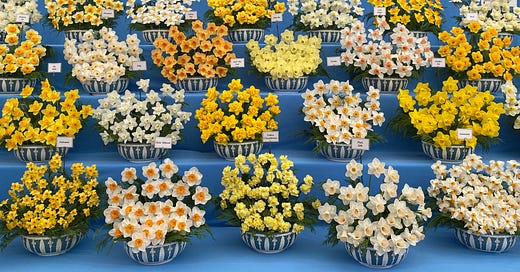



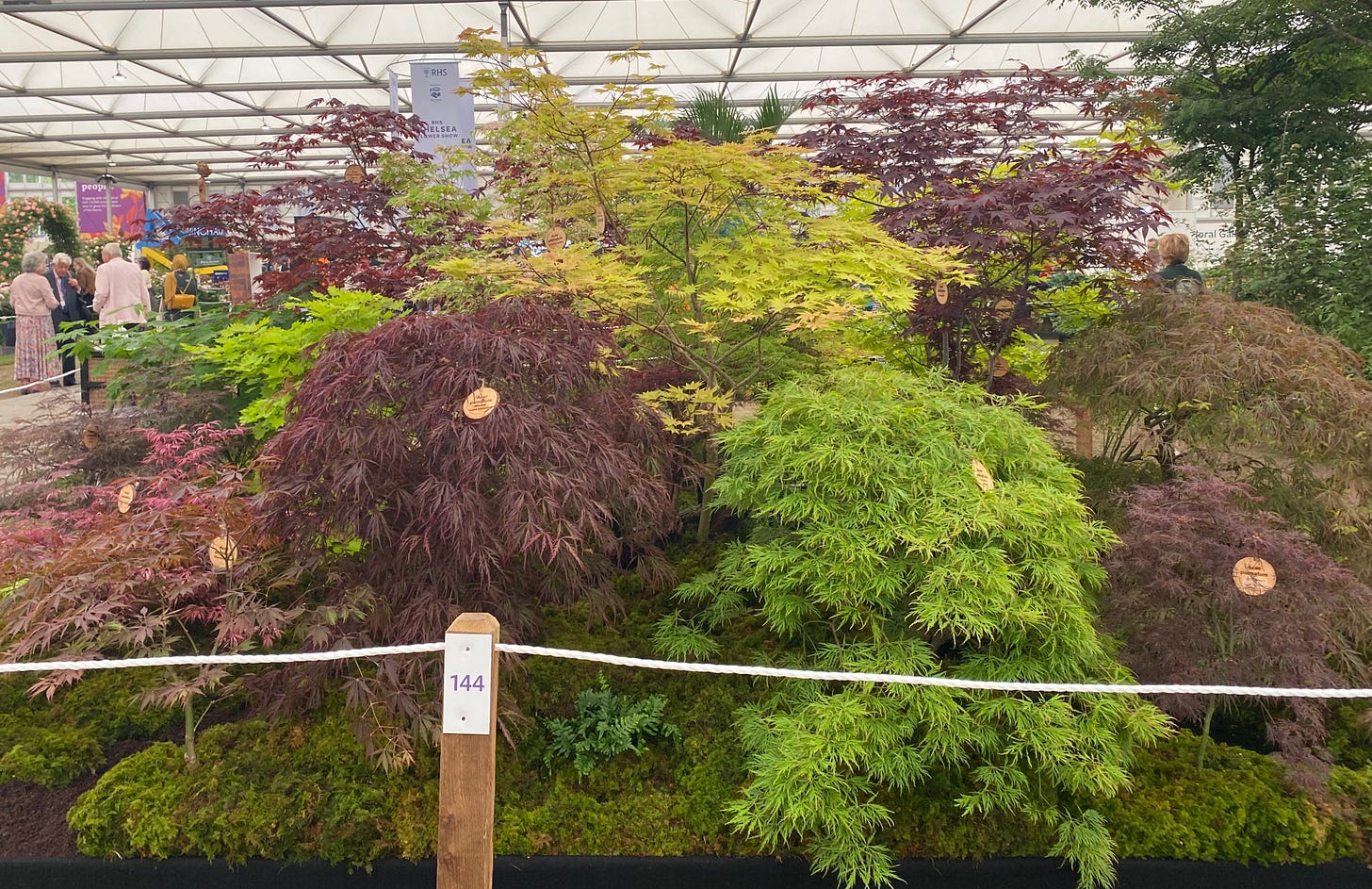
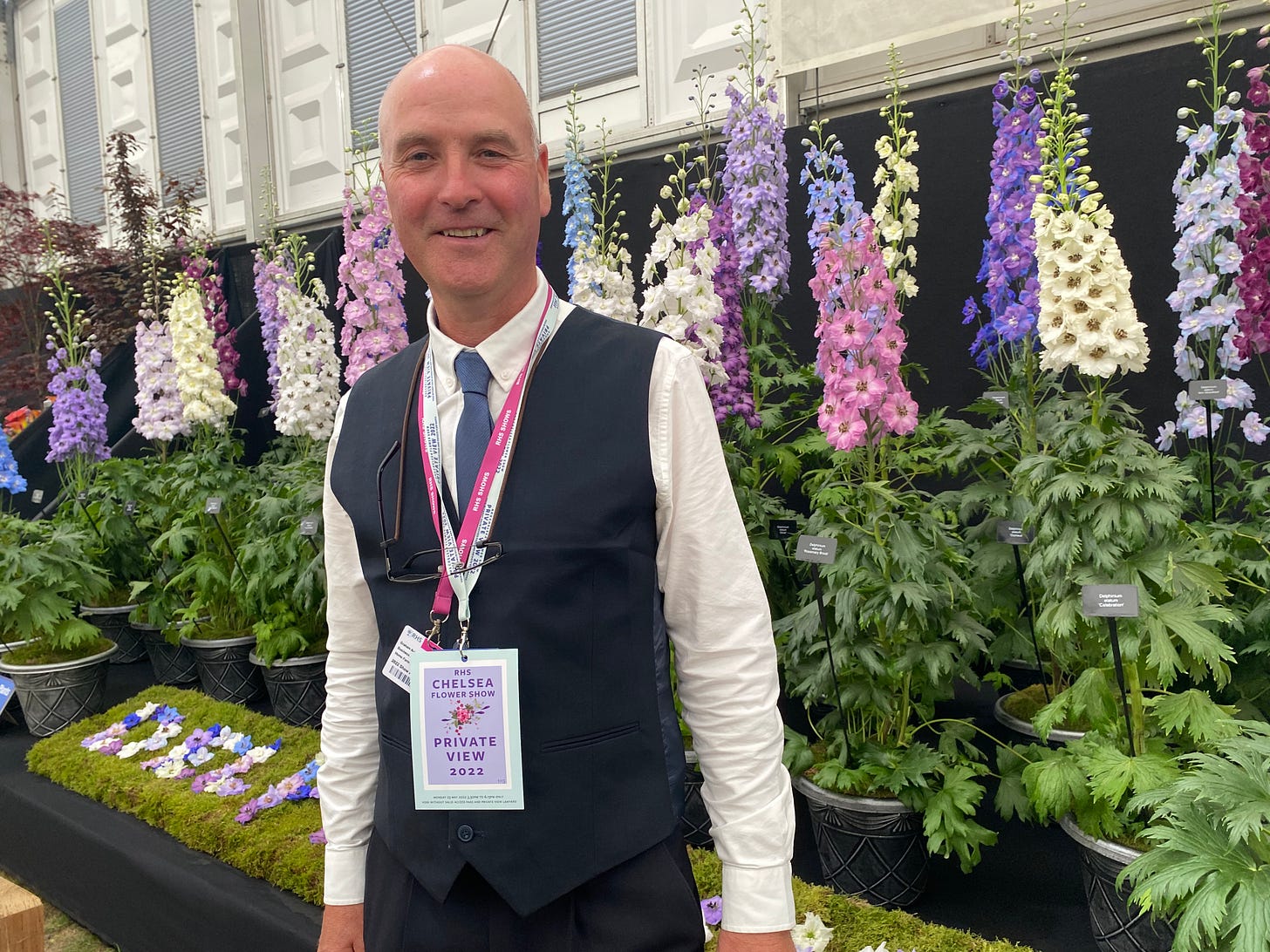

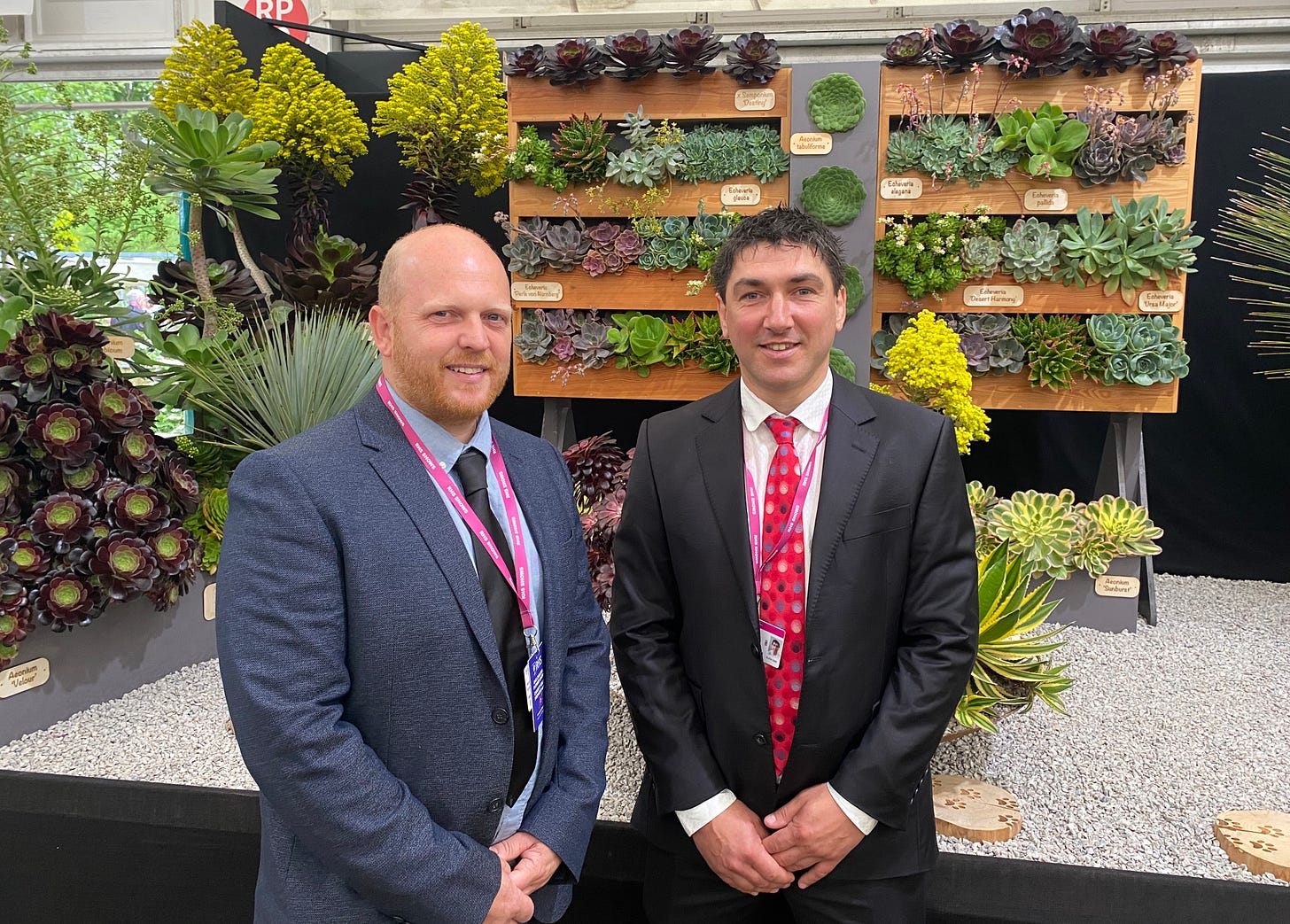
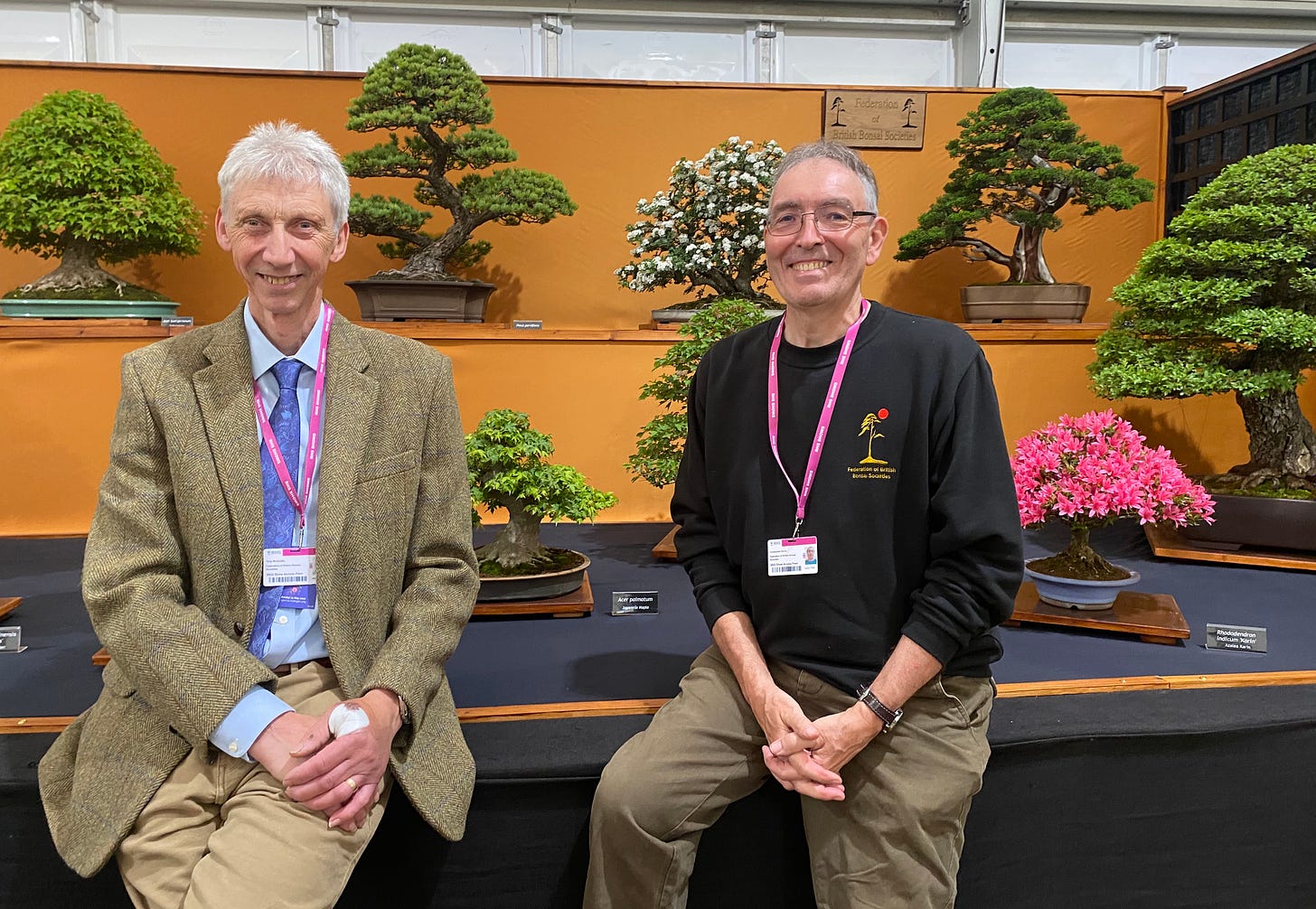
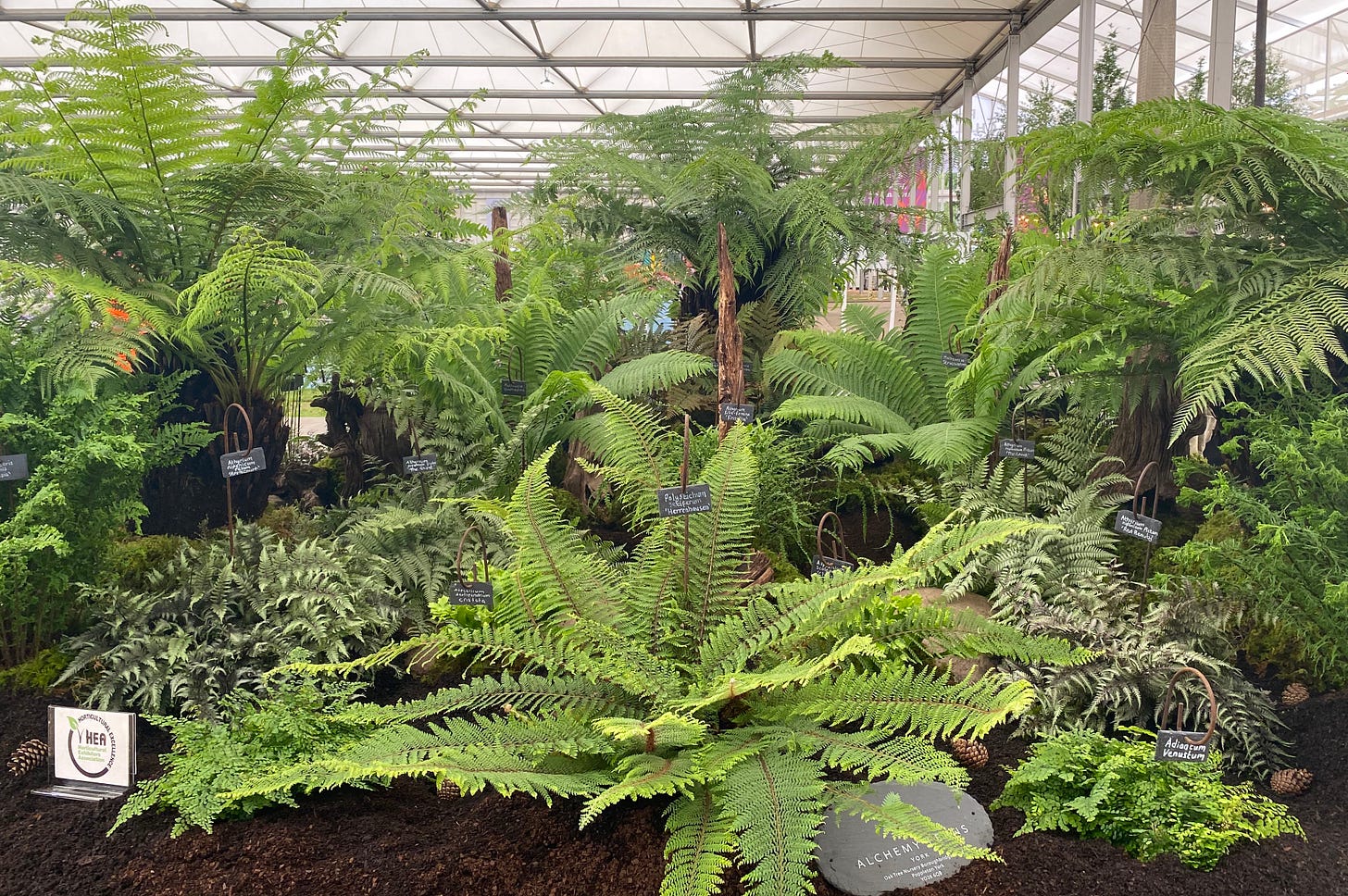
Nice piece Dan. I love the modest passion of these independents in the grand marquee and there’s so much originality there. Although the show gardens are very impressive, I found most of the planting very similar this year, with the main differences being the heft of the sponsors’ wallet for the varying degrees of structure.
This earnest plant passion made me smile. Thanks for brightening my day!